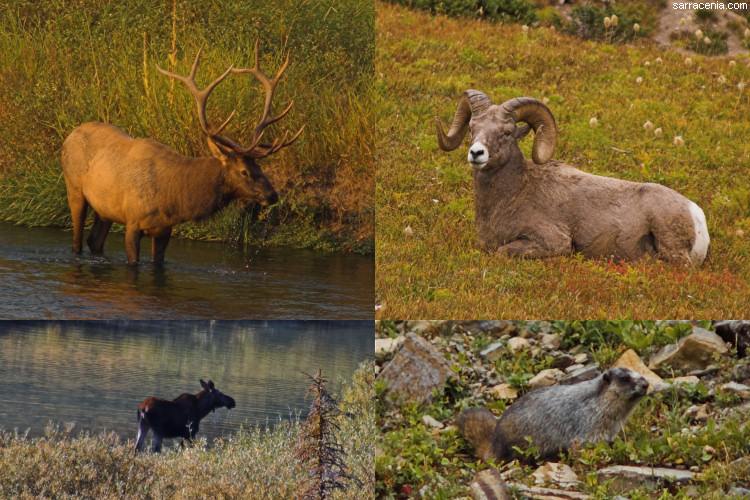
Spectacular mammal viewing:
The mammal density in Montana, and Glacier in particular, is tremendous. And I am not just talking about tiny voles and
mice--I am talking about big mammals. Mammals that are surprisingly close.
I am no wildlife photographer, but even I was pleased with these images of elk,
bighorn,
moose, and hoary marmot. That hoary marmot, by the way, is the largest species of marmot in North America.
It is always exciting to see black bears in the wild (here is a
blonde phase black bear Beth and I encountered
during a California Utricularia minor trip), and Glacier has a large
population of them. But I
was concerned about grizzly bears. I know that my concern was out of proportion--the risks of car
crash, dehydration, falls, etc., are all much greater. After all, grizzlies are very rare--only about 200 animals occur in
Glacier. The risk of a black bear attack is vastly greater--about one person is attacked by black bears every year in Glacier.
But there is something particularly terrifying in a grizzly.
My fear was not entirely groundless. Ten people have been killed and eaten by grizzlies in Glacier since 1967, most
recently in 1998. Wikipedia has a
list of them. While my trip reports tend towards irreverence, I won't make fun of this. If
you visit Glacier, you must remember that you
are the intruder in the habitat of magnificent and unpredictable animals. Attacks are tragic, but ultimately it is us
humans who are the visitors to the site--the animals live there.